Seagrass production around artificial reefs is resistant to human stressors
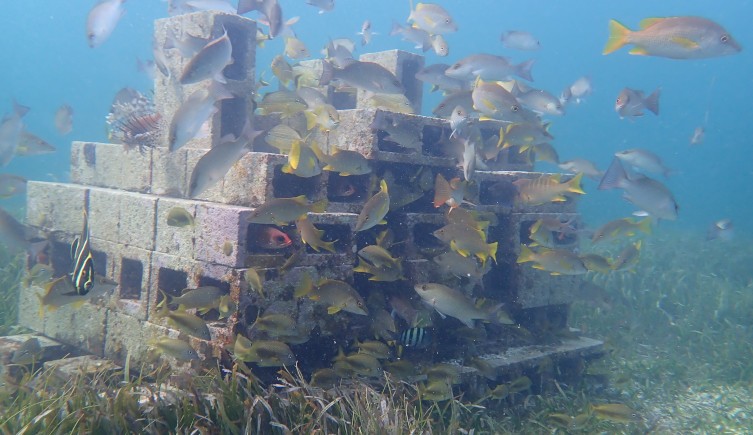
Artificial reefs might help to restore the ocean’s ability to fight against climate change. The reefs boost the productivity of seagrass meadows by attracting fish, which can improve the ability of these habitats to lock up more carbon dioxide beneath the waves. Breeze blocks placed in one of the ocean’s most endangered habitats provide an unexpected lift for fish. Seagrass meadows are found across the world, reaching from the tropics up into the lower reaches of the Arctic circle. They are incredibly valuable habitats, providing a nursery for young fish as well as sucking vast quantities of carbon dioxide from the atmosphere. However, with an area of seagrass the size of a football pitch being lost every 30 minutes, it’s more important than ever to find out how to turn things around. A new study in the Caribbean has shown that artificial reefs can help to bolster their growth in the tropics, even as threats such as fishing and nutrient pollution continue. Dr Jacob Allgeier, a co-author of the paper, says, ‘By attracting fish, whose faeces provide concentrated nutrients for the seagrass, the artificial reefs increase the primary production of the entire ecosystem.’ ‘We are now investigating how this cascades up the food web. The new energy has to go somewhere, so we are quantifying how it affects invertebrates and fish with our evidence suggesting that it is fuelling increases in both.’ The findings of the study were published in Proceedings of the Royal Society B. Artificial reefs and seagrass One of the biggest issues affecting seagrass is nutrient pollution, often from the release of human sewage. While the influx of nutrients can initially boost the growth of the meadows, it also promotes the growth of algae which reduces the amount of sunlight getting to the seagrass and harms it in the long run. Alongside fishing which causes levels of the fish faeces that fertilise the meadows to drop, it was thought that the combination of these two issues might work in unexpected ways to hinder the growth of seagrass. But the current study has revealed some surprising results. It has found that the productivity of seagrass in both disturbed and undisturbed meadows was increased by the presence of an artificial reef, while algae didn’t actually seem to pose an issue, even in areas where nutrient pollution was high. Mona Andskog, the PhD student who led the research, explains, ‘Artificial reefs built in seagrass create a positive feedback loop. They attract fish that use the reefs for shelter which, in turn, supply new nutrients from their faeces that fertilise the seagrass around the reef.’ ‘This increased primary production can increase invertebrate production by providing more food and shelter for invertebrates, which in turn provide more food for fishes.’ Experiments in Haiti, at some of the most fished sites included in the study, also showed that the artificial reefs were providing additional benefits to the fish. Large numbers of small fish were found at the site because of the difficulty in using nets around the reef, meaning that the overall biomass of fish was at times larger than in unfished areas measured elsewhere in the study. While artificial reefs present a promising option for tropical seagrasses, they’re likely to have a much more limited impact on temperate meadows. These waters already tend to have higher nutrient levels, meaning that any contribution the reef would made to overall growth would be small. The scientists now hope to explore how the placing of artificial reefs can affect seagrass ecosystems, as well as expanding their research to the Dominican Republic. ‘We will be testing how different configurations of artificial reef clusters can affect the production and fish community composition,’ Jacob says. ‘This includes the number of artificial reefs in each cluster, as well as their arrangement.’ ‘As with this research, we hope to simultaneously use the reefs to test fundamental questions about production in these highly impacted ecosystems as well as optimising the positive feedback that is initiated by the artificial reefs.’ More information: Mona A. Andskog et al, Seagrass production around artificial reefs is resistant to human stressors, Proceedings of the Royal Society B: Biological Sciences (2023). DOI: 10.1098/rspb.2023.0803 This story is republished courtesy of Natural History Museum. Read the original story here.
Caribbean seagrasses provide services worth $255B annually, including vast carbon storage
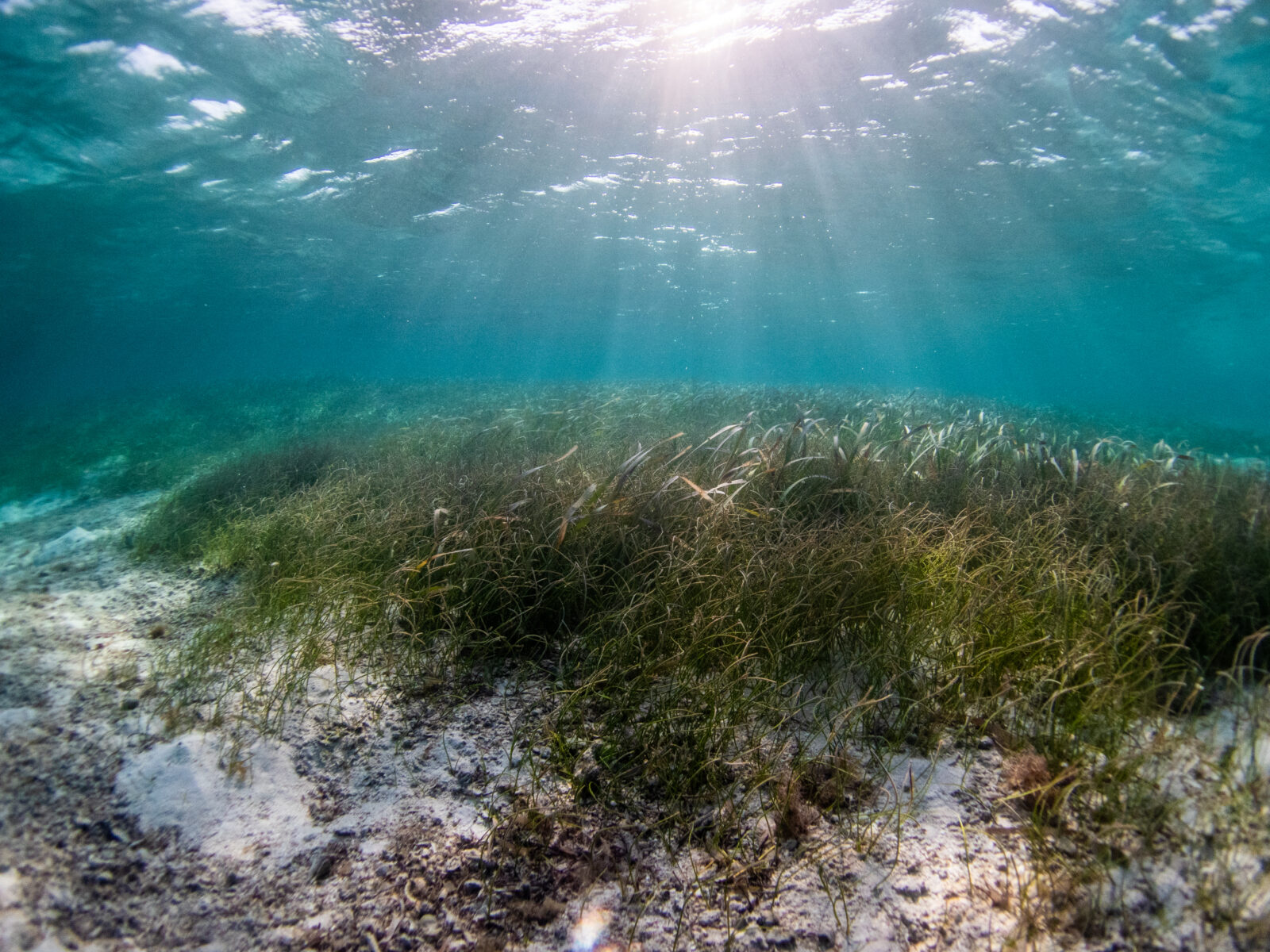
Discussions of valuable but threatened ocean ecosystems often focus on coral reefs or coastal mangrove forests. Seagrass meadows get a lot less attention, even though they provide wide-ranging services to society and store lots of climate-warming carbon. But the findings of a new University of Michigan-led study show that seagrass ecosystems deserve to be at the forefront of the global conservation agenda, according to the authors. It’s the first study to put a dollar value on the many services—from storm protection to fish habitat to carbon storage—provided by seagrasses across the Caribbean, and the numbers are impressive. Using newly available satellite data, the researchers estimate that the Caribbean holds up to half the world’s seagrass meadows by surface area, and it contains about one-third of the carbon stored in seagrasses worldwide. They calculated that Caribbean seagrasses provide about $255 billion in services to society annually, including $88.3 billion in carbon storage. In the Bahamas alone, the ecosystem services provided by seagrasses are valued at more than 15 times the country’s 2020 gross domestic product, according to the study published online June 21 in the journal Biology Letters. “Our study is the first to show that seagrass beds in the Caribbean are of global importance in their areal extent, in the amount of carbon they store, and in the value of the economic services they provide to society,” said study lead author Bridget Shayka, a doctoral student in the U-M Department of Ecology and Evolutionary Biology. “The findings underscore the importance of conserving and protecting these highly threatened and globally important ecosystems, which are critical allies in the fight against climate change.” One way to prioritize seagrass conservation would be to include those verdant undersea meadows in global carbon markets through projects that minimize loss, increase areal extent or restore degraded beds. The idea of selling “blue carbon” offset credits, which monetize carbon stored in coastal and marine ecosystems, is gaining traction for several reasons. For one, many island nations that have already been impacted by climate change—through increasingly intense hurricanes or rising sea levels, for example—have large areas of valuable coastal ecosystems that store carbon and that provide other services to society. Blue carbon (the name refers specifically to carbon stored in coastal and open-ocean ecosystems while “green carbon” refers more broadly to carbon stored in all natural ecosystems) offset credits could be a way for wealthier countries to compensate for their contribution to human-caused climate change while at the same time benefiting the economies of impacted countries and helping to conserve coastal ecosystems, which are among the most impaired in the world. Threats to seagrass meadows include coastal development, chemical pollution, recreation, shipping and climate change. “Because seagrass ecosystems are both highly important for carbon storage and sequestration, and are highly degraded globally, they represent an important burgeoning market for blue carbon,” said marine ecologist and study senior author Jacob Allgeier, an associate professor in the U-M Department of Ecology and Evolutionary Biology. “Yet, to date, a fundamental impediment to both evaluating seagrass and promoting it in the blue carbon market has been the lack of thorough seagrass distribution data.” For their study, the U-M-led team used newly available seagrass distribution data collected by the PlanetScope constellation of small DOVE satellites. They classified Caribbean seagrass ecosystems as either sparse or dense and estimated the amount of carbon in plants and sediments using data from Thalassia testudinum, the dominant seagrass species in the region. The researchers then calculated a conservative economic value for the total ecosystem services provided by seagrasses in the Caribbean and for the stored carbon, using previously published estimates for the value of services including food production, nursery habitat for fishes and invertebrates, recreation and carbon storage. Grouper, queen conch and lobster are among the commercially harvested animals that rely on Caribbean seagrass. Green sea turtles, tiger sharks and manatees also depend on it. To estimate the dollar value of the carbon stored in Caribbean seagrass beds, the researchers used $18 per metric ton of carbon dioxide equivalents, borrowed from California’s cap and trade program. In addition to Caribbean-wide estimates, the researchers calculated values for individual countries in the region: The Bahamas has the largest share of Caribbean seagrass (61%), providing total ecosystem services valued at $156 billion annually, including $54 billion in carbon storage. Cuba ranks second in areal seagrass coverage (33% of the Caribbean total), with a value of $84.6 billion per year for all ecosystem services, including $29.3 billion for carbon storage. The dollar value of the carbon in seagrasses around Cuba is equivalent to 27% of the country’s 2020 GDP. “Importantly, the degradation of seagrass beds often leads to erosion and sediment resuspension, which can create a positive feedback of increased seagrass loss and the release of C stored in sediments,” the authors wrote. “Blue carbon finance thus represents a potential mechanism by which the global community can invest in conserving and protecting these vital ecosystems.” More than 60 species of seagrasses grow in shallow coastal waters around the world. They evolved from land plants that recolonized the oceans 70 to 100 million years ago. In a separate paper accepted for publication in the journal Proceedings of the Royal Society, Allgeier and colleagues show that the construction of artificial reefs in the Caribbean can help protect seagrass ecosystems from human impacts, including nutrient pollution and overfishing. Seagrasses use photosynthesis to pull carbon dioxide from the atmosphere, then store the carbon in plant tissues. The seagrasses are quickly inundated by sediments, slowing decomposition. As a result, more than 90% of the carbon stored in seagrass beds is in the top meter of sediment. Caribbean seagrasses and associated sediments store an estimated 1.3 billion metric tons of carbon, according to the new study. That’s a big number, but it’s just 1.09% of the carbon contained in above- and below-ground woody biomass in the Amazon, and just 1.12% of the carbon in the biomass and soils of the world’s temperate forests, according to the new
Fauna return rapidly in planted seagrass meadows, study shows
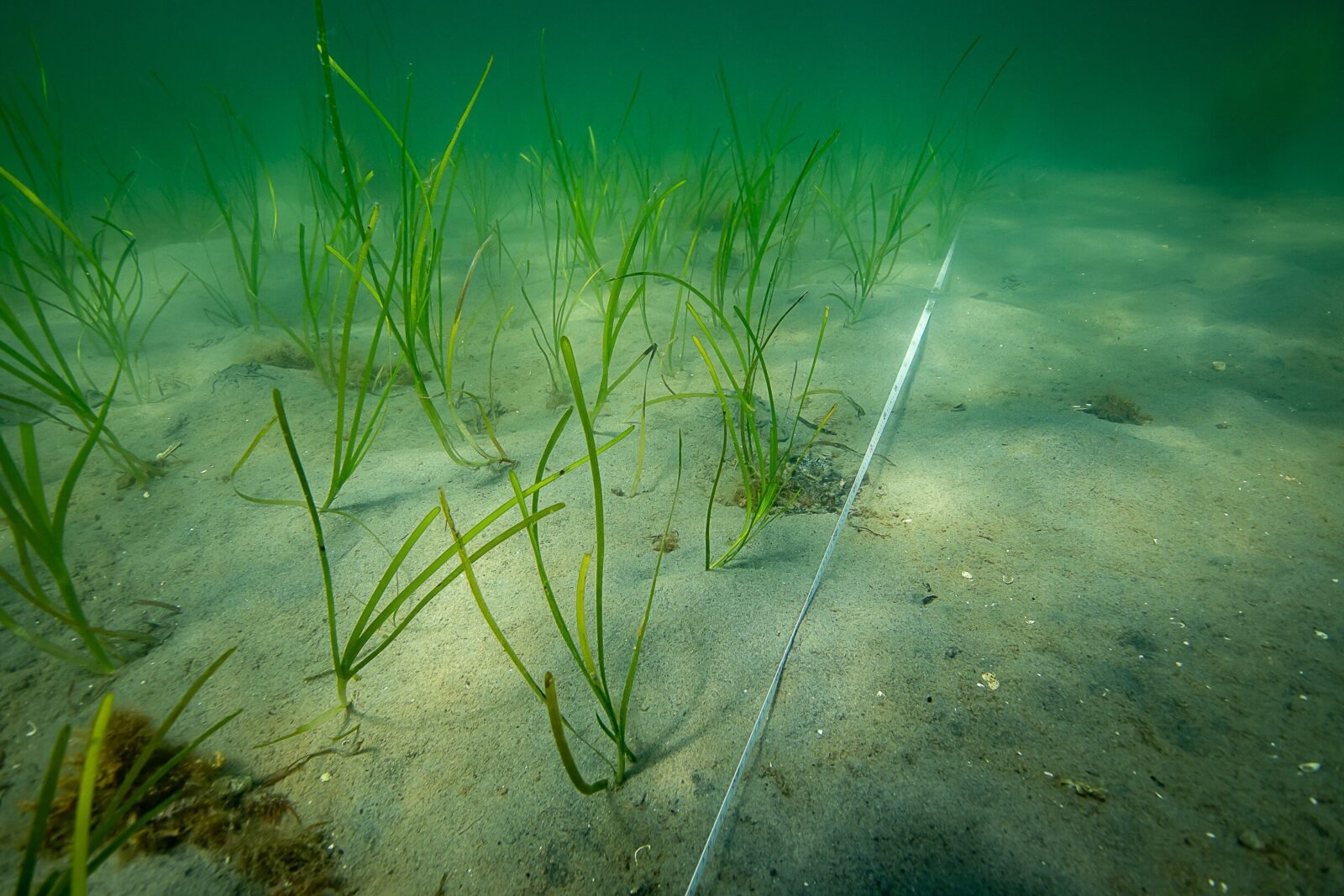
A study of eelgrass meadows planted by researchers from the University of Gothenburg shows that fauna return rapidly once the eelgrass has started to grow. Already after the second summer, the biodiversity in the planted meadow was almost the same as in old established eelgrass meadows. Eelgrass meadows have declined heavily in southern Bohus county in recent decades and in many places have disappeared altogether. Researchers at the University of Gothenburg have been working on the restoration of eelgrass meadows for twelve years. These meadows are important for biodiversity, as the eelgrass serves as habitat or nursery for young cod, crabs and shrimps for example. In a new study, the researchers have evaluated how rapidly replanted eelgrass gets populated by various invertebrates. The study has been going on for over two years in a bay near Gåsö island just west of Skaftö in Bohus county, and the findings are very positive. The researchers counted the abundance of invertebrates that live or burrow in bottom sediments or on the surface of bottom sediments. Size less important “The recolonization has been very rapid. After the first three-month growing season, up to 80 percent of the invertebrates had returned to the newly planted eelgrass,” says Eduardo Infantes, marine biologist at the University of Gothenburg. During the summer in 2019, the researchers planted the eelgrass shoots in four test plots of different sizes on the seabed, and with different spacing between the shoots. According to the researchers’ observations in autumn 2020, size has played less of a role in the recovery of biodiversity in the eelgrass meadows. In fact, even if the eelgrass has not had time to grow to the same density as in an established eelgrass meadow, the biodiversity is similar after only two growing seasons as in a reference area of preserved eelgrass in the same bay. Even smaller patches embedded within larger restoration plots showed good results. Their findings were reported in the journal Restoration Ecology. Can save money “This is good news for future restorations and new plantings of eelgrass meadows. We can plant new smaller plots with fewer shoots and this saves money because this is an expensive method for restoring biodiversity on the seabed,” says Eduardo Infantes. Eelgrass meadows have multiple functions that make it imperative to protect them. In addition to their important role in the coastal ecosystem, eelgrass roots bind the sediment and prevent erosion and limit resuspension of sediment in the water. More information: Karine Gagnon et al, Rapid faunal colonization and recovery of biodiversity and functional diversity following eelgrass restoration, Restoration Ecology (2023). DOI: 10.1111/rec.13887
Seagrass crucial to stemming the tide of coastal erosion
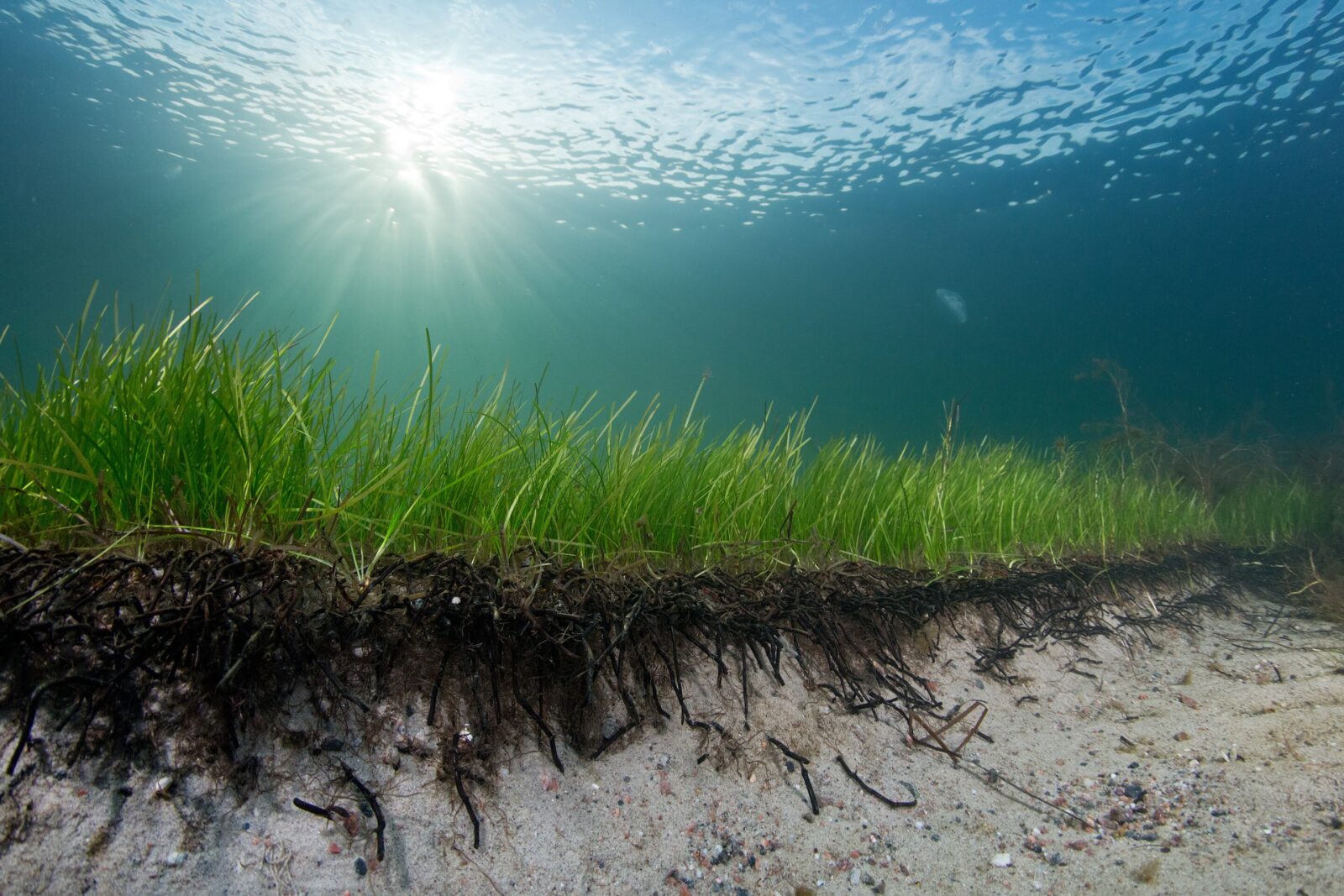
The sea devours large tracts of land when storms wash sand out to sea from the coast. A new study involving a researcher from the University of Gothenburg has shown that seagrass can reduce cliff erosion by up to 70% thanks to its root mats binding the sand. Coastal erosion is a global problem that is often combated by replenishing the coast and beaches with new sand in locations where storms wreak the greatest havoc. According to a 2016 survey conducted by the Geological Survey of Sweden, 12% of Skåne’s coastline in southern Sweden is vulnerable to increasing rates of coastal erosion. It is an even bigger issue in other countries. In the Netherlands, the coastline is protected through the construction of dikes made from stone and mud. Another solution is to utilize nature’s own defenses against coastal erosion. In this new study, researchers examined the importance of seagrass for preserving the coastline. “We have seen that seagrass meadows in the coast are valuable assets in mitigating erosion. We already know that their long canopies serve as breakwaters, but now we can show that their root mats also bind together the underwater sand dunes, effectively reinforcing them,” says Eduardo Infantes, a marine biologist at the University of Gothenburg and the lead author of the study which has been published in the journal Marine Ecology Progress Series. More powerful storms in the future Common eelgrass is a seagrass species that grows along Sweden’s coasts, and there are areas with large seagrass meadows growing on the bottom sediments, such as in Skåne. In other places, the seagrass has disappeared altogether. This not only represents an ecological loss, it can also mean that the coast becomes more vulnerable to erosion. As the climate changes, storms risk becoming more powerful, which in turn can lead to an increase in coastal erosion. Approximately 8% of the world’s population live in areas at an elevation of fewer than 10 meters above sea level. Rising sea levels may see many people affected by coastal erosion. “This is why it is even more important to preserve those seagrass meadows that still exist today and to replant seagrass in those places where it has disappeared. In our research, we have made successful attempts to restore common eelgrass meadows on the Swedish west coast, but if such replanting efforts are to succeed, there is a need for detailed studies of the current status seabed environment,” says Eduardo Infantes. In this study, the researchers took samples of sandy sediments with and without common eelgrass from a number of sites and placed them in a large tank capable of simulating waves. The experiments demonstrated that the sand is eroded far less by waves when seagrass is growing in it. The researchers also took samples from muddy seabeds but found that the effect of the seagrass there was less. However, this matters less since muddy seabeds are most commonly found in fjords and other areas that are less exposed to waves. More factors in field tests The next step will be to move out of the laboratory environment and take measurements of sand erosion on an exposed shoreline along the coast. Other factors such as currents, traffic on the water, inflows from rivers etc. can then affect the erosion. “It’s more complicated in the field, but we have created realistic storm waves in our experiments and the seagrass has clearly shown a protective effect against erosion. I think we will be able to demonstrate the similar effects in field tests,” says Eduardo Infantes. More information: E Infantes et al, Seagrass roots strongly reduce cliff erosion rates in sandy sediments, Marine Ecology Progress Series (2022). DOI: 10.3354/meps14196
Why saving the world’s seagrass is part of the most important to-do list in the history of humankind
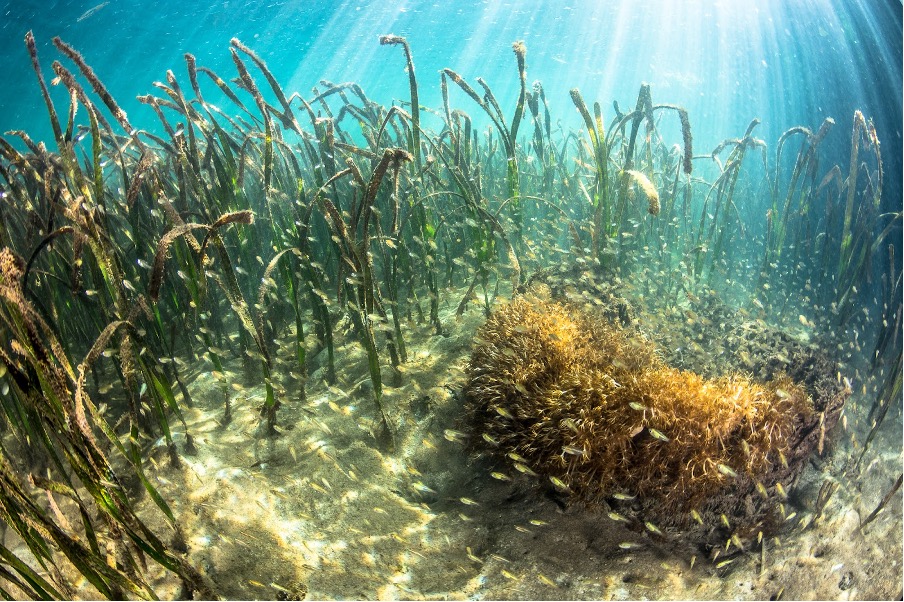
“The downward trajectory of the world’s seagrass meadows must be reversed if we are to fight the planetary crisis” say leading seagrass scientists. The United Nations Sustainable Development Goals have recently been described as “the most important to-do list in the history of humankind”. Scientists from Project Seagrass and Swansea University have this week published a unique review that demonstrates how this “To-Do List” of Sustainable Development Goals provides a blueprint for achieving the net recovery of seagrass ecosystems. Conserving and restoring seagrass meadows contributes to achieving 16 out of the 17 Sustainable Development Goals. Recognising this wide role of seagrass meadows in helping achieve humanity’s ‘to-do list’ and thinking beyond their value in carbon sequestration and storage is critical to achieving the recovery of these degraded ecosystems. The call for urgent action comes after a review into the status of seagrass ecosystems and the major ecological role that they play in the coastal environment published in the leading academic journal Science and written by experts at the marine conservation charity Project Seagrass and Swansea University. Seagrass meadows are being increasingly looked to as a climate solution. However, seagrass ecosystems are sensitive to stressors and remain threatened across the globe. These degraded seagrass ecosystems are less effective at supporting biodiversity and tackling climate change. The authors state “Society needs to create meaningful pathways to net gain at local to global scales. Bold steps are needed through improved legal instruments to halt damaging factors such as bottom trawling, prevent use of damaging boating activities and to apportion responsibility for poor water quality that is causing the slow death of seagrass globally”. By recognising that seagrass meadows contribute to finding solutions to global problems such as food insecurity, water quality, wellbeing and gender equality, as well as the more well known issue such as biodiversity loss and climate change there becomes a more holistic view as to the benefits of taking large cumulative levels of action at local, regional and global scales. We need local and regional authorities to create a baseline of where seagrasses are now, where they used to be and where in the future they could be allowed to recover and be restored to get seagrass on the path to recovery. This needs to occur within the next decade if we are to fight climate change, to fight the biodiversity crisis, protect our coastlines and maintain global food security. Richard Unsworth (lead author) said “The world needs to rethink the management of our coastal environment that includes realistic compensation and mitigation schemes that not only prevent damage, but also drive the restoration, enhancement and creation of seagrass habitat. We also need a major shift in how we perceive the status of our marine environment by examining historical information, not just recent ecological baselines”. Ben Jones, a fellow author of the study added, “It is vital to work collaboratively as it is only through utilising scientific environmental studies and working as cogs in a global partnership for seagrass that meaningful change can happen”. Seagrass conservation faces substantial ecological, social and regulatory barriers and requires strong cross-sectoral partnerships to be put on the path to recovery. Identifying the solutions to seagrass conservation and restoration has never been more urgent and is critical to fight the planetary emergency. This can be achieved by using the Sustainable Development Goals as a blueprint towards recovery. Read the paper here.
Seagrass meadows are reliable fishing grounds for food
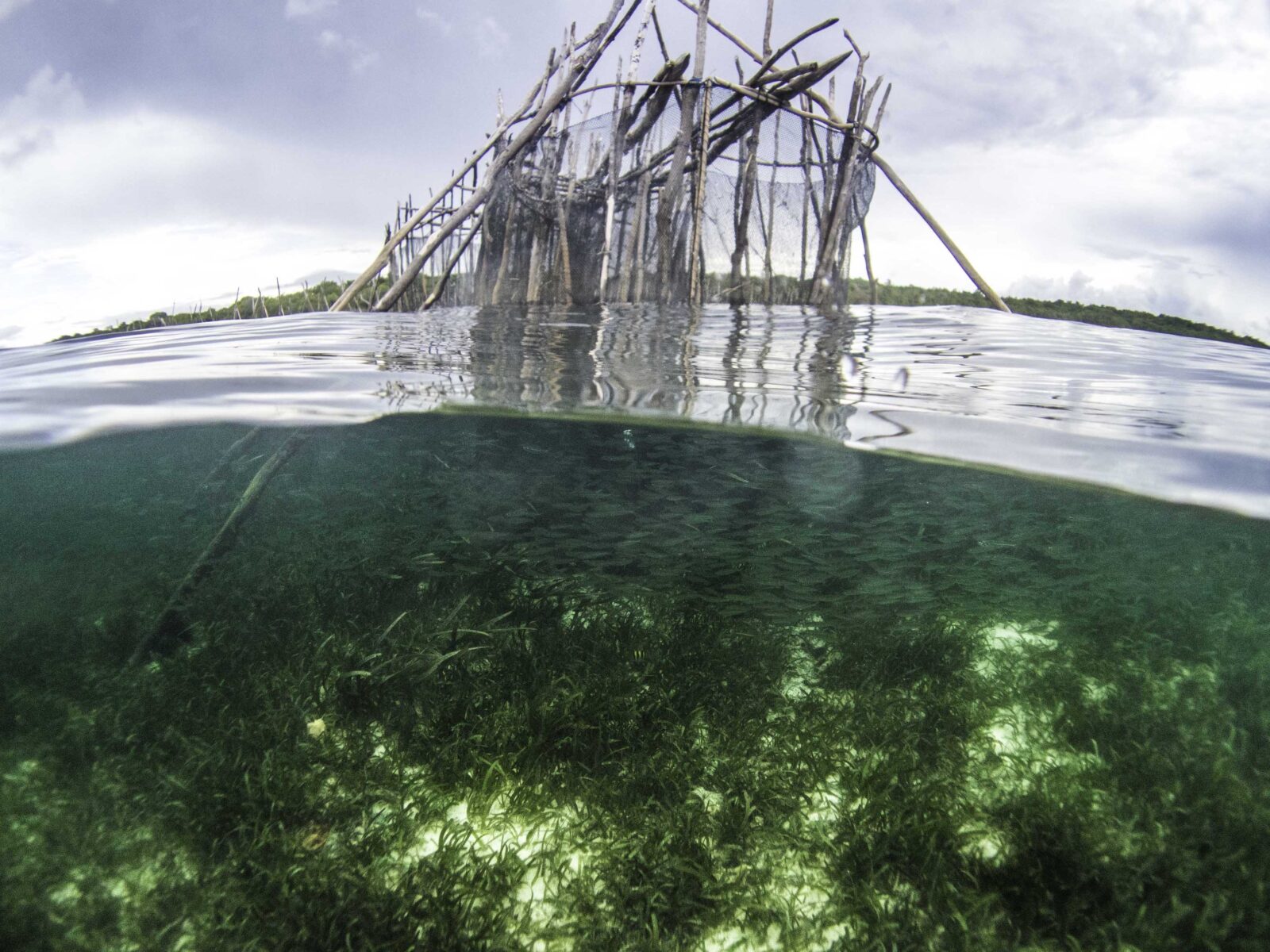
A new study shows that seagrass fisheries provide a reliable safety-net for poor fishermen, since they perceive those habitats to maintain large fish catches over time. Surprisingly, even more so than coral reef fisheries, which people normally associate with small-scale fishery. Seagrass meadows are routinely used as a fishing habitat across the Indo-Pacific region to sustain millions of households by providing fish and other animals for food and income from fishing. A new study in Ocean and Coastal Management investigated how and why households use seagrass meadows across Cambodia, Tanzania, Sri Lanka and Indonesia in the Indo-Pacific region by conducting interviews that asked what habitats they used and which they preferred. Benjamin Jones, director of Project Seagrass and PhD student at the Department of Ecology Environment and Plant Sciences, Stockholm University, says: “Seagrass was the most common habitat used for fishing. Nearly half of all households we talked to preferred fishing in seagrass over other habitats such as coral, mangroves, open ocean, mud and rock for example. This was surprising because most people think of reef fisheries as the key tropical small-scale fishery, but we show that its actually engagement in seagrass fisheries that are much more characteristic of households.” When the researchers asked the fishermen why they preferred seagrass, they expressed a general feeling of reliability: seagrass meadows always provide large catches and fish and invertebrates are always found there. This is likely due to the ecological role that seagrass meadows play for fish. They provide valuable nursery habitats with lots of places for fish to hide and grow which means that there is often a high abundance of fish present. The study also revealed that 3 in 20 people across the region were reliant on seagrass meadows as their fishing ground and did not fish anywhere else. The research from households in 147 villages also revealed that reliance on seagrass meadows was strongly influenced by household income: “Household income had two different effects. On one hand, poorer households were less likely to own motorboats. These were reliant on seagrass as they were unable to fish elsewhere, seagrass is close to shore and easy to access without a motor. On the other hand, wealthier households were more likely to own certain types of fishing gear that incentivized them to use seagrass due to high rewards and low effort requirements. These were static fishing fences that don’t require a fisherman to be present” says Benjamin Jones. Study co-author and fellow Project Seagrass director Leanne Cullen-Unsworth, says “Our results highlight the need for empirical household scale data for management of seagrass meadows. People use and value seagrass for many different reasons so safeguarding seagrass is vital to ensure that all people, all of the time, have equitable and equal access to the resources seagrass provides.” The study was a collaboration between scientists from Stockholm University, Project Seagrass, Swansea University, Uppsala University, Hasanuddin University, among others. Open Access paper: Jones, B.L.H.; Unsworth, R.K.F.; Nordlund, L.M.; Eklöf, J.S.; Ambo-Rappe, R.; Carly, F.; Jiddawi, N.S.; La Nafie, Y.A.; Udagedara, S.; Cullen-Unsworth, L.C. Dependence on seagrass fisheries governed by household income and adaptive capacity. Ocean & Coastal Management 2022, 225, doi:10.1016/j.ocecoaman.2022.106247.
A Glimmer of Hope for Seagrass in the Wakatobi National Park?
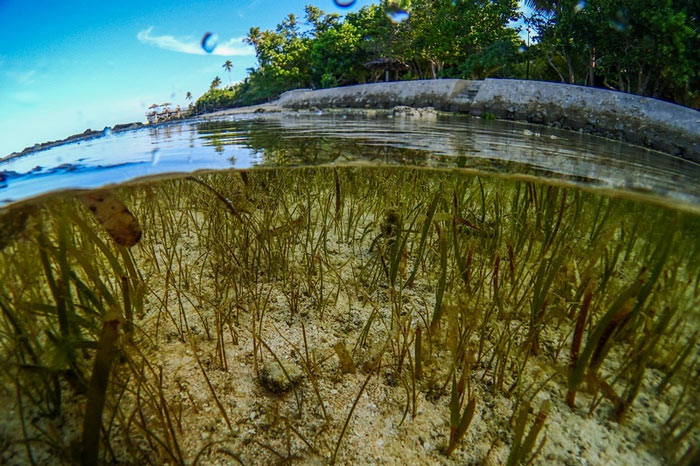
Back in December 2015 I spent a couple of weeks in the Wakatobi, Indonesia, initiating phase II of the Wakatobi Seagrass Program. This seeks to build on work carried out though a previous project “Recognising the role of seagrass meadows in food security: re-prioritising the marine conservation agenda” (2011-2014), which was conducted in the same location. That project evidenced the direct economic value and food security potential of seagrass meadows and prompted local government and community stakeholders to place seagrass on their conservation agendas for the first time. The Wakatobi project demonstrated how seagrass associated species provide an essential source of protein and income to the vast majority of people in the region. We provided evidence of the links between seagrass and food security and highlighted that these currently expansive ecosystems remain largely ignored within formal legal or environmental management frameworks, even within an MPA at the heart of the Coral Triangle. Seagrass meadows provide an essential source of protein and income to the vast majority of people in the region. The outputs from the first project are being used to drive forward discussions between local stakeholders to bring about change. And although their value is somewhat recognised in the Wakatobi, these expansive ecosystems are threatened by a myriad of anthropogenic activities. The host of threats at play within the Wakatobi range from mangrove destruction to overfishing and aren’t going to disappear overnight. Phase II of the Wakatobi Seagrass Program seeks to work on these threats through local, community level action, and devising strategies to work with formed the basis of my trip. Seagrass meadows across the Wakatobi are threatened by a host of factors. Overfishing has left many meadows lifeless. As communications developed with our local partner, FORKANI, it seemed clear that one of the issues they felt was dominant, was the issue of run-off. Terrestrial run-off causes huge problems for seagrass through both sedimentation and eutrophication, and as the destruction of mangroves (15% of mangrove forest has been destroyed by local community members seeking firewood and construction materials) and forest areas continues, the ability for land to absorb and store water lessens. Given this, FORKANI proposed an exciting idea to rehabilitate both mangrove and forest areas around rivers in 3 key villages, not only to reduce impact on seagrass but to improve the continually worsening problem of water storage on the island of Kaledupa. However, with so much forest now converted to palm plantations, choosing areas to rehabilitate wasn’t going to be an easy task, and choosing areas that were key was even harder. FORKANI were amazingly resourceful when it came to the practicalities of choosing locations, mapping each river in a way that made it easy to pin point areas that needed the most work. Sometimes working the old fashioned was has its perks, and the relative ease in which they categorised each river was efficient and effective. FORKANI have now chosen areas to rehabilitate and are currently working on preparing the areas and seedlings, while also beginning to monitor seagrass in front of each village to track their own progress. Conducting river mapping was efficient and effective and allowed FORKANI to choose key areas for rehabilitation Even though discussions were productive, overfishing is still the “elephant in the room” that nobody wants to talk about. Although dynamite and cyanide fishing are now almost absent across the national park, at least that’s what we’re told, the unsustainable removal of juvenile fish is still a widespread issue. Fish fences, or “sero” as they are locally called, are one of the biggest issues facing the Wakatobi National Park and tentative UNESCO World Heritage Site. These fish fences, scar’s upon the face of the park’s beauty, fish 24/7 and, as we’ve discovered, are not only restricted to seagrass meadows. Fish fences have left both reefs and seagrasses looking like barren wastelands. Fishing 24/7. The Sero are non selective and never stop fishing Tackling the overfishing problem will take time, but by tapping into the past, we can begin to improve the future of the Wakatobi’s coastal fisheries. For centuries, isolated communities across the globe have respected a delicate balance with the ocean — taking fish only from certain areas, of certain sizes and with specific methods to maintain a healthy ecosystem and supply of fish for present and future. Now, with two key fishing villages keen to work on adopting community managed no-take areas there is some serious hope for the future. This solution, which builds on and adapts successful fisheries management techniques, provides a win-win for coupled socio-ecological systems, protecting fishers wellbeing as well as the health of marine ecosystems. Systems like this, that are well-managed, result in more fish — and not just by a few. By adopting this formula, and continually managing their fishery, communities can expect to see a potential increase of up to 56 percent in fish abundance and a potential increase in yield of up to 40%. In 2006, then Indonesian President Susilo Bambang Yudhoyono made a hugely ambitious promise to conserve a “global epicentre of marine life abundance and diversity”, stating that Indonesia would preserve 10 million hectares of ocean lying in the Coral Triangle. In 2009, he doubled this commitment to 20 million hectares by 2020. The the 1.39 million hectare Wakatobi National Park contributes to the 16.6 million hectares already protected – but given the status of seagrasses and the vast overfishing problem, serious questions about the meaning ‘protected’ arise. Is the Wakatobi destined to become a site of World Heritage value or just a wasteland? The Wakatobi’s communities are centre to answering this question. Although their sense of ownership always has been present, with these proposed mitigation measures being taken a little more seriously by communities, its clear that with a little motivation the people of Kaledupa can be tremendously proactive. This gives us a glimmer of hope for seagrass in this dynamic region of the world. The future of the Wakatobi is dependent on its communities, yet the
Puttalam Lagoon – Paradise Lost?
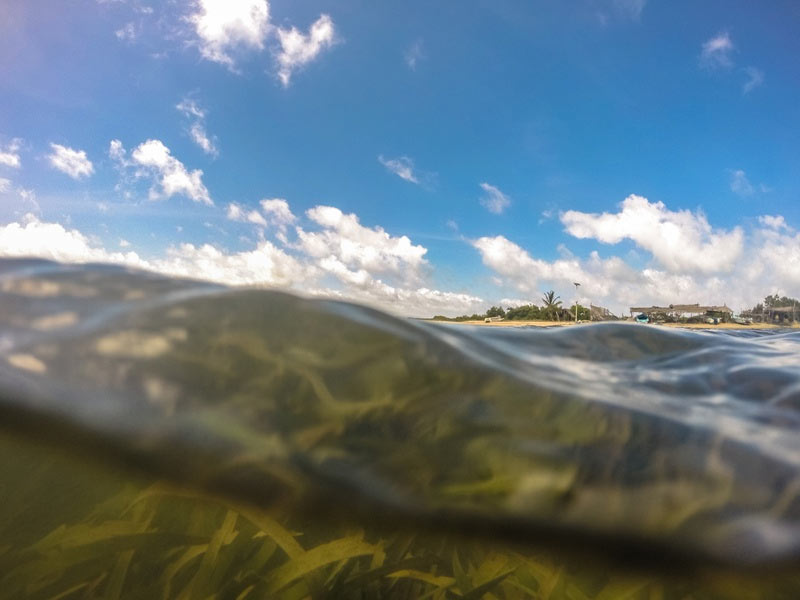
At the end of August I spent 10 days conducting fieldwork in Pattalam Lagoon, which is situated in the north west of Sri Lanka. The purpose of my visit to Puttalam Lagoon was to set up socio-economic and fish landings surveys with a research collaborator, who will now complete the surveys. This research was undertaken to contribute to a growing database covering South East Asia and beyond, linking seagrass meadows and food security, by using Sri Lanka as a case study. The lagoon was fringed with seagrass meadows and populated by many dense mangrove islands. Before the trip, I had profiled the area to gain some understanding of the people, the environment and the lagoon itself – which was once a tropical paradise. However, upon arrival I was faced with shock at the sheer size of the lagoon, measuring 327 km2, which was once surrounded by dense mangrove forests. From the onset it was clear that much of the once rich mangrove forests had been removed to make way for coconut plantations, salt production, rice cultivation and most notably shrimp farms – an industry that would be dominant throughout my findings. For the duration of my trip I was based in Kalpitiya, a relatively small, but densely packed town with a population just shy of 65,000. A large proportion of the population are refugees, whom fled Mannar in 1990’s when Tamil Tiger militants ordered them to leave or face death, and although they have lived in the area for over 20 years, many still desire to return home. Early starts. 5:30am at Oththakanna, the smaller of the two landing sites. Due to the nature of the research, which was split between landing surveys and household interviews, I was fortunate enough to spend much of my time with the large and lively fishing community where I focused on two very different landing sites. My day’s started early, meeting the fishermen at around 5:30am, just as they were returning to the landing site after collecting their catch. The first, more traditional landing site, where fishers mainly targeted shrimp, was made up of around 60 fishers and a small, coconut leaf hut, known locally as a Wardiya, was the focal point of the site and was used to weigh and sell shrimp. The second landing site was larger, fish were always the target species and had a strong community sense with a large number of older fishers helping to sort individual catches, which on some days were in excess of 400Kg. Upali ran his Wardiya very strictly, and all sales were weighed and recorded. At the smaller landing site, Oththakanna, it was clear that seagrass played an extremely important role in the fishery – “We catch more shrimp in seagrass” said Upali, the owner of the Wardiya, “Without seagrass, I would not be here”. Even though this was the case and all fishing occurred in seagrass there, the very nature of the seagrass shrimp fishery will be its downfall, with high levels of illegal fishing, most of which is damaging the seagrass. It was clear that fishing was primarily a source of income and not food, with extremely high and unregulated by-catch and fisher’s targeting shrimp only. Any shrimp that were caught were sold to a middleman whom would drive from up from Colombo, load up his ice filled truck, and then return to Colombo to prepare the shrimp for export. In some cases, over half the catch was discarded and numerous juvenile fish, including groupers, snappers and emperors, all highly valued sources of food at other case study locations, were either thrown to dogs and crows, or left on the beach. Of the by-catch species, seahorse are the only highly valued species, which can be sold to tourists for a high price. Yet the level of appreciation for seagrass, and the fishers desire to halt the use of illegal fishing gears gives some hope for the future. Catfish caught in the lagoon were mainly salted and dried – a cheaper source of protein than fresh fish. The larger landing site, Wannimundalama, was completely different with traditional non-motorised boats being replaced with more modern fibre glassed boats with outboard engines. The fishing was different too, and shrimp were no longer the target. Instead, net fishers targeted sardine, and in the majority of cases, this was all they caught. In some cases, catfish were also caught, but instead of being sold fresh, these were salted and dried. The fishing at this site was effective and a real community effort, with the men conducting the fishing, and women de-scaling and gutting the fish as soon as it was landed. Still, seagrass was appreciated for its value as a nursery area, and again fishers knew that if it was lost, they would no longer be able to fish. Although the data only displays a snapshot of the lagoon fishery, it is hoped that with continued research we can gain a deeper understanding of its complexity and begin to work with the fishers to minimise the impact their fishing is having on the seagrass meadows there. It wasn’t all doom and gloom, and I left hopeful as the fishers welcomed me into their “fishing family” and began to make an effort to return any live by catch to the sea – much to the dog’s disappointment. View more photos from Ben’s trip here.

